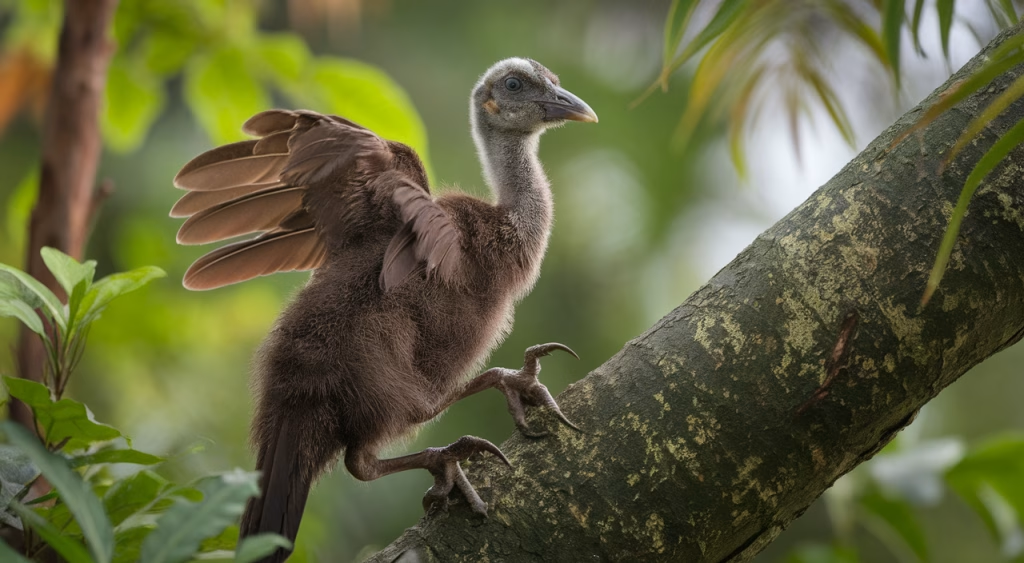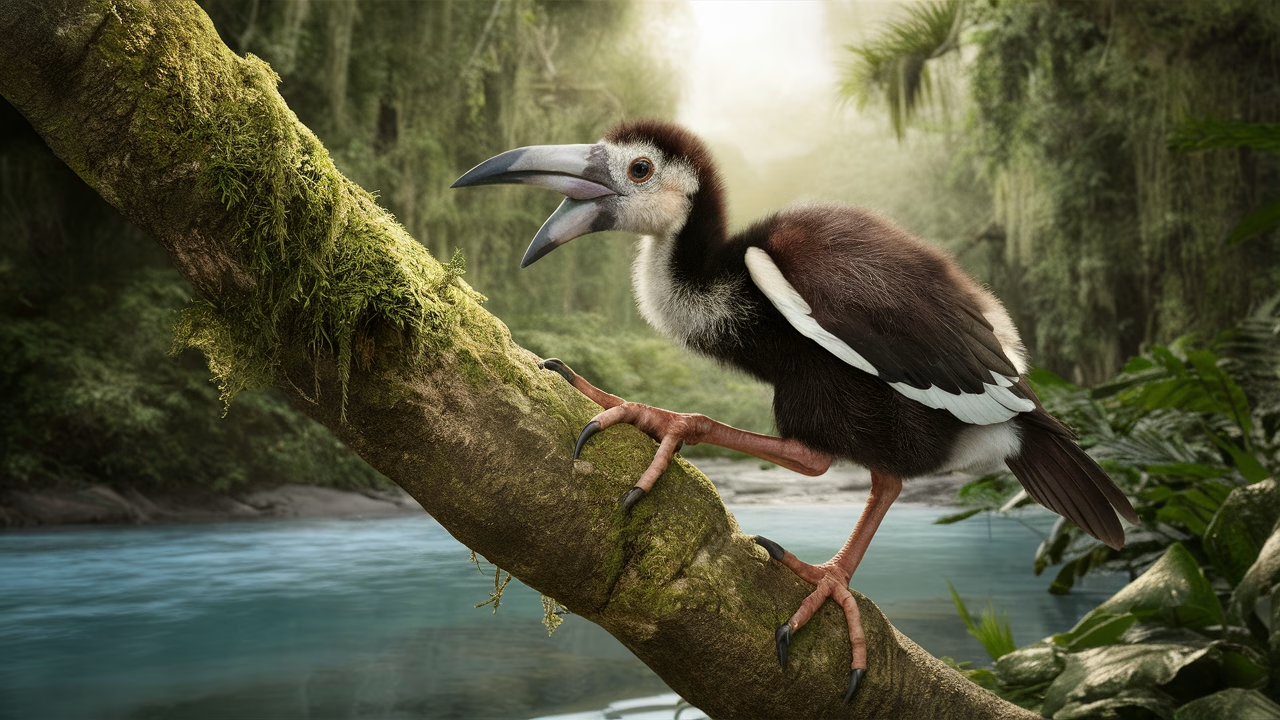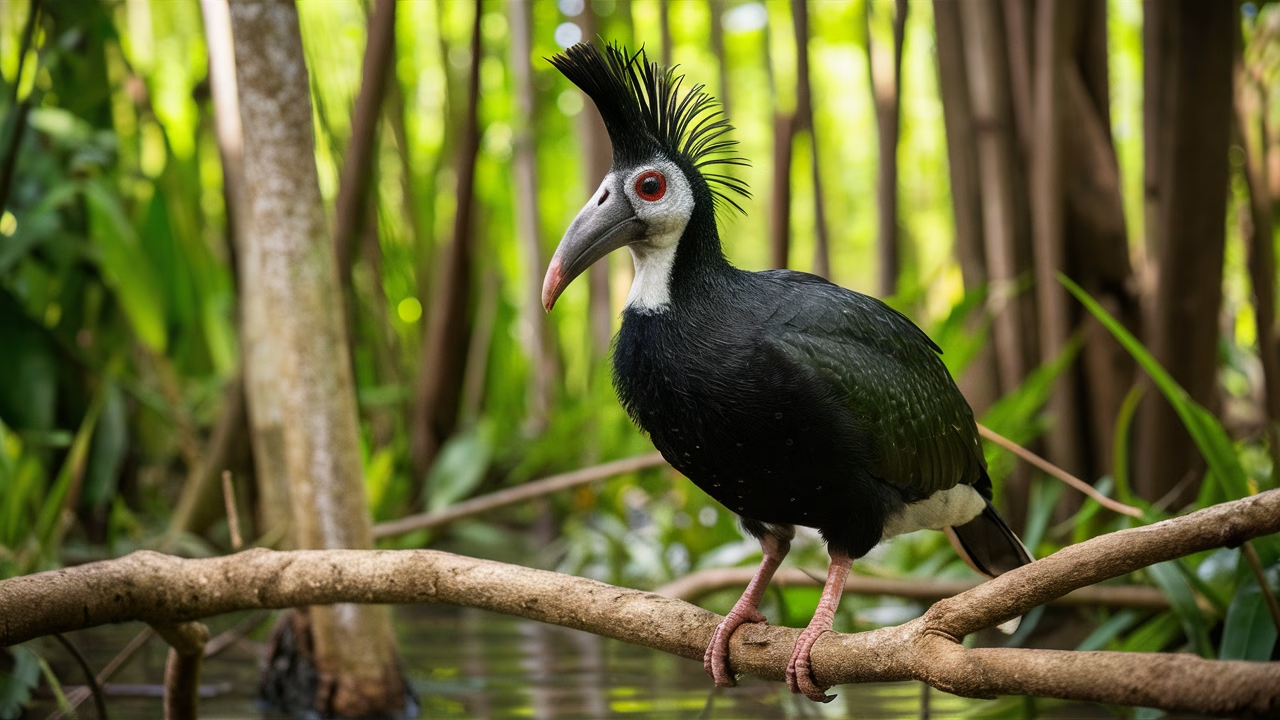Why Do Hoatzin Chicks Have Claws on Their Wings?
Hoatzin chick claws on their wings serve as essential survival tools that help baby hoatzins climb trees and escape predators before they develop flight abilities. These wing claws represent one of nature’s most remarkable adaptations among modern bird species, offering you a fascinating glimpse into avian evolution and unique bird features.
TL;DR: The Evolutionary Secret of Hoatzin Chick Claws
- Survival Strategy: Wing claws help baby hoatzins grip branches and climb back to safety if they fall into the water below their nests.
- Evolutionary Echo: These claws resemble features from ancient bird-like dinosaurs, offering a living snapshot of evolutionary history.
- Adaptation Over Flight: Before hoatzin chicks develop the ability to fly, their wing claws serve as a crucial mobility tool in their swampy environments.
- Unique Bird Species: Hoatzins are the only living bird species with this wing adaptation, setting them apart in the avian world.
1. Introduction to Hoatzin Chicks
When you think of bird species, wing claws likely aren’t the first adaptation that comes to mind. But hoatzin chicks defy expectations with their remarkable climbing behavior. Native to the swamps and riverbanks of South America, the hoatzin (Opisthocomus hoazin) is already fascinating as an adult — but it’s the baby hoatzins that truly astonish scientists and bird lovers alike. These fuzzy creatures hatch with two hoatzin chick claws on each wing, an evolutionary throwback rarely seen in modern avian life.
Picture baby hoatzins scrambling out of harm’s way — not by flying, but by climbing like squirrels. That’s how these remarkable chicks avoid danger. Perched above rivers and wetlands, hoatzin chicks often fall or leap into the water to evade predators. They then use their wing claws to scale their way back up branches, demonstrating climbing behavior that’s virtually unmatched among bird species. Ever seen a bird behave like a monkey? With hoatzin chicks, you’re witnessing exactly that.
But what makes these wing claws truly fascinating isn’t just their function — it’s their evolutionary story. To understand hoatzin chick claws is to begin unraveling a thread of evolutionary wonder stretching back millions of years.
2. The Unique Adaptations: Baby Hoatzins’ Climbing Behavior
At just a few days old, baby hoatzins come equipped with a behavior toolkit that few other bird species possess — extraordinary climbing behavior. This adaptation is driven by one of the rarest physical features in the avian world: functional wing claws. These sharp, curved claws are perfectly adapted for gripping mangrove-like branches and lianas in their flooded forest homes.
Here’s what typically happens in the wild: when a predator like a hawk or snake approaches the nest, hoatzin chicks, unable to fly, instinctively leap into the murky waters below. This isn’t suicidal — it’s tactical survival. After the threat disappears, the chick strategizes its re-entry: it swims to the nearest root, shakes off the water, and begins its vertical journey back to safety using its hoatzin chick claws combined with wing flapping and foot pushes. This climbing behavior might look awkward, but it’s remarkably effective.
This climbing ability isn’t just impressive — it’s vital for baby hoatzins. Without these wing claws, many chicks would become easy prey in their exposed, riverside nests. Studies show that this climbing behavior dramatically increases chick survival rates during their early stages, before they develop flight abilities around day 14 to 20 post-hatch.
3. Understanding the Wing Claws Phenomenon
To understand where these hoatzin chick claws originated, we must examine evolutionary history. All modern bird species descended from feathered dinosaurs, and many ancient relatives — like Archaeopteryx — also possessed wing claws. Over time, as flight became more refined and species adapted to different environments, most birds lost these clawed features.
Hoatzins appear to have retained them — or perhaps redeveloped them — as a specific adaptation to their wet, arboreal environment. These aren’t just evolutionary remnants. In baby hoatzins, these wing claws are fully functional tools. They sit at the end of the wing’s first and second digits, like miniature grappling hooks designed for climbing behavior.
Complex evolutionary questions remain: Did hoatzins retain this feature from ancient ancestors, or did they develop wing claws anew as an adaptation for swampy nesting grounds? Either way, hoatzin chick claws provide a rare window into evolutionary history — biological déjà vu where evolution revisits ancient solutions in remarkably new ways.
| Feature | Hoatzin Chick | Most Modern Birds |
|---|---|---|
| Wing Claws | 2 functional claws | Absent or vestigial |
| Climbing Behavior | Yes, highly developed | Rare to non-existent |
| Flight Ability (Early) | Not until 2–3 weeks old | Varies; most do not climb |
4. Evolutionary Importance and Survival Benefits
So, what do hoatzin chick claws mean for bird enthusiasts, evolutionary biologists, and curious nature lovers? Simply put: these wing claws represent a living laboratory for understanding survival, behavior, and life’s adaptability. Their climbing behavior highlights how specific anatomical traits can reemerge or persist when they provide survival advantages in specialized environments.
Environments shape behavior, and behavior drives evolution. This represents natural selection in action. In the dynamic floodplains of the Amazon and Orinoco, where hoatzins live, nests are often low-hanging and exposed. Flightless baby hoatzins need effective escape methods and safe return strategies. Their wing claws literally provide a life-saving grip on their future.
As scientists study these unique bird species, they gain insights into the ancient bird-dinosaur transition. Hoatzin chick claws aren’t just about evolutionary history — they reveal how current adaptations function in rapidly changing ecosystems. Will future hoatzins adapt even further, or will their climbing behavior evolve as their environment changes?
5. Funky Odor and Other Unique Features of Adult Hoatzins
Hoatzin chicks aren’t the only source of evolutionary fascination in this species. Adult hoatzins carry their own collection of unique bird features — most notably, their distinctive smell. That’s right: hoatzins have earned the nickname “stinkbird” due to their unmistakable odor caused by a unique digestive system that ferments leaves in a specialized foregut, much like cows.
This digestive process helps them survive on a leafy diet — another uncommon trait among bird species — but it also produces their characteristic musky smell. Predators tend to avoid them, and their meat isn’t prized by hunters, which has oddly worked in their favor for survival.
Beyond their aroma, hoatzins display peculiar appearances — sporting mohawk-like crests, blue facial skin, and red eyes that give them the look of prehistoric punk birds. They’re slow flyers and hesitant movers, relying more on stealth and stillness than agility. Unlike the agile escape methods of other bird species, hoatzins are specialist survivors with unique features adapted to their specific environment.
Final Thoughts: A Living Glimpse into Avian Evolution
In the diverse world of bird species, hoatzins stand apart — not just because of their appearance and smell, but because they carry a remarkable survival story. From hoatzin chick claws to fermented digestion, these birds aren’t just surviving — they’re demonstrating that evolution creates extraordinary solutions.
If you ever find yourself exploring South America’s watery forest edges, watch for these fascinating birds. In every chick that uses its wing claws to climb back to safety, you’ll witness climbing behavior that tells an evolutionary story millions of years in the making.
Frequently Asked Questions
- Do baby Hoatzins have claws on their wings? Yes, hoatzin chicks are born with two functional wing claws used for climbing in their forest habitat.
- Why do hoatzin chicks need wing claws? They allow chicks to climb back to their nests after escaping predators by jumping into nearby water.
- Are hoatzin wing claws related to dinosaurs? Yes, hoatzin claws are similar to those found in ancient birds like Archaeopteryx — they’re evolutionary throwbacks.
- Do adult hoatzins keep their wing claws? No, adult hoatzins lose the function of these claws as they mature and begin to rely on flight.
- Where do hoatzins live? They inhabit the Amazon and Orinoco river basins in South America, favoring swampy and forested areas.
- Why do hoatzins smell bad? They ferment leaves in a special stomach chamber, producing a strong odor as a byproduct.
- Are hoatzins endangered? Not currently, but habitat destruction poses a risk to their population in the future.





